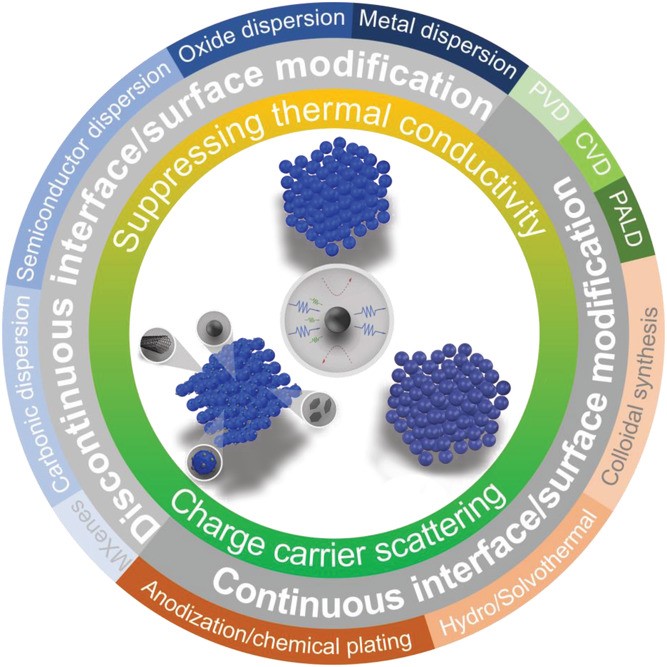Shiyang He, Sebastian Lehmann, Amin Bahrami, Kornelius Nielsch
Thermoelectric (TE) materials are prominent candidates for energy converting applications due to their excellent performance and reliability. Extensive efforts for improving their efficiency in single-/multi-phase composites comprising nano/micro-scale second phases are being made. The artificial decoration of second phases into the thermoelectric matrix in multi-phase composites, which is distinguished from the second-phase precipitation occurring during the thermally equilibrated synthesis of TE materials, can effectively enhance their performance. Theoretically, the interfacial manipulation of phase boundaries can be extended to a wide range of materials. High interface densities decrease thermal conductivity when nano/micro-scale grain boundaries are obtained and certain electronic structure modifications may increase the power factor of TE materials. Based on the distribution of second phases on the interface boundaries, the strategies can be divided into discontinuous and continuous interfacial modifications. The discontinuous interfacial modifications section in this review discusses five parts chosen according to their dispersion forms, including metals, oxides, semiconductors, carbonic compounds, and MXenes. Alternatively, gas- and solution-phase process techniques are adopted for realizing continuous surface changes, like the core–shell structure. This review offers a detailed analysis of the current state-of-the-art in the field, while identifying possibilities and obstacles for improving the performance of TE materials.
Link zum Paper: https://doi.org/10.1002/aenm.202101877

